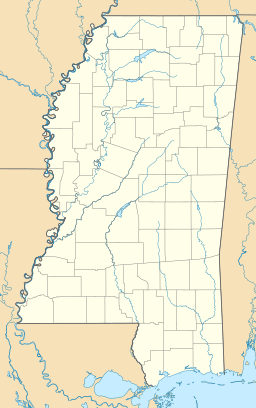Lake Washington (Mississippi) facts for kids
Quick facts for kids Lake Washington |
|
|---|---|
 |
|
| Location | Washington County, Mississippi |
| Coordinates | 33°04′00″N 91°02′48″W / 33.0667001°N 91.0467721°W |
| Type | Oxbow lake |
| Primary outflows | Washington Bayou |
| Surface area | 5,000 acres (2,000 ha) |
| Average depth | 6 ft (1.8 m) to 22 ft (6.7 m) |
| Surface elevation | 95 ft (29 m) |
| Settlements | Chatham, Erwin, Glen Allan |
Lake Washington is a cool oxbow lake located in Washington County, Mississippi, United States. An oxbow lake is a U-shaped lake that forms when a wide bend of a river is cut off from the main river.
Lake Washington was once a part of the mighty Mississippi River. Around the year 1300 AD, the river changed its path. This left behind a section of the old river, which then became Lake Washington.
What Lives in Lake Washington?
The lake is home to various plants and animals. You can find plants like duckweed and tall cypress trees growing there.
Many types of fish swim in Lake Washington. These include bowfin, bream (also known as bluegill), buffalo, bullhead, carp, and channel catfish. Other fish species are crappie, drum, flathead catfish, gar, and green sunfish. You might also spot hybrid white bass, largemouth bass, minnows, silversides, and yellow bass.
A Look Back in Time: Lake Washington's History
Lake Washington has a rich history. The very first permanent home in Washington County was built right on the lake in 1826. A man named Frederick G. Turnbull settled there and called his place Linden.
The house standing on that spot today, also called Linden, was built in 1914. It is so important that it is listed on the National Register of Historic Places. This means it's a special building recognized for its historical value.
Another old and grand house, Mount Holly, was built on the east side of Lake Washington before the Civil War. It is also listed on the National Register of Historic Places.
The Junius Ward home was built in Erwin in 1826. It started as a simple log cabin and is still standing today. The same family has owned it since it was first built.
An impressive house called the Law House overlooks the lake. It was built in 1902 from a kit ordered from the famous Sears & Roebuck Company. This house was even used in the filming of the 2012 movie Haunted.
On the north side of the lake, you'll find Roy's Store. This store is famous for being in business at the same spot for over 100 years!
Keeping Lake Washington Clean
Most of the land around Lake Washington is used for farming. This means that things like fertilizers, pesticides, and herbicides from the farms can sometimes wash into the lake. This runoff can cause pollution.
In 1973, people were not allowed to fish for business in the lake because of contamination. Later, in 1990, a type of harmful algae grew in the lake. This blue-green algae bloom unfortunately caused the death of 14 dogs that drank the water.
Since then, many people have worked hard to clean up Lake Washington. They are making big efforts to reduce the pollution and keep the lake healthy for everyone.



